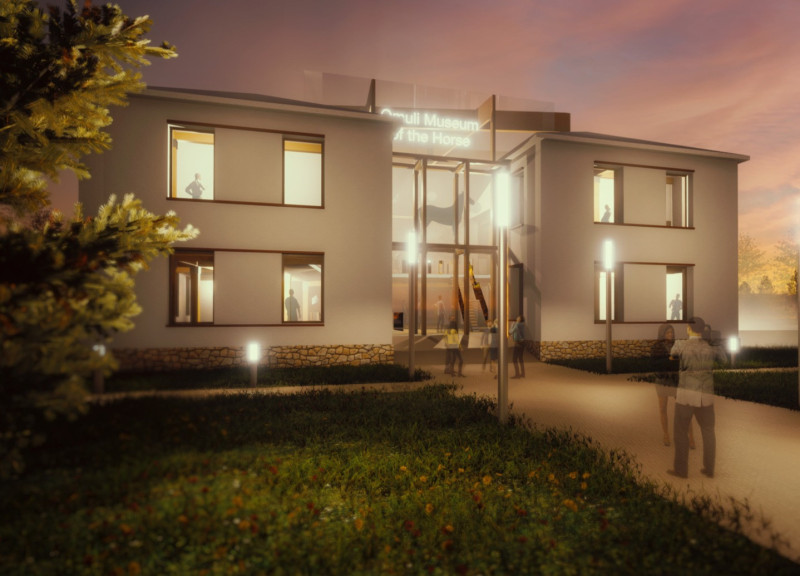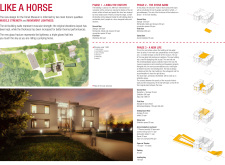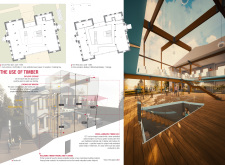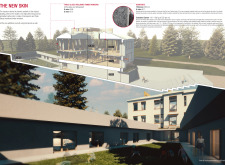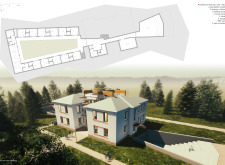5 key facts about this project
The Omuli Museum project brings together historical preservation and modern design in a harmonious way. Located in a natural setting, the museum is inspired by the qualities of a horse, reflecting both strength and lightness. The design focuses on contrasting the solid, muscular character of the original building with a new glass structure, enhancing both the functionality and visual appeal while connecting visitors to the landscape.
Architecture Concept
The core architectural idea is to create a dialogue between hard, solid forms and light, transparent elements. The existing walls of the museum have been preserved and made thicker to improve their energy efficiency. This choice pays tribute to the historical significance of the structure. In contrast, the new triple-glazed hall offers a sense of openness. It invites visitors to feel the relationship between the indoor space and the trees outside.
Phase Structure
The design unfolds in three distinct phases. In the first phase, known as "Living the History," the original building is renovated with minimal changes to retain its historical character. The ground floor accommodates storage, a kitchenette, and restrooms. On the first floor, a workshop area invites artists to create, making the space vibrant and engaging for visitors.
The second phase introduces the "Stone Barn," which is refurbished to provide overnight accommodations for artists and a groundskeeper. This addition continues to support the museum's role as a center for creativity while preserving the barn's historic aspects. Facilities for visitors mirror those in Phase 1, creating a sense of continuity in the overall use of space.
Transformative Features
In the third phase, a new main axis is introduced. This axis crosses the original building and symbolizes a new chapter for the museum. The glass hall enhances the visitors' experience, encouraging social interaction and artistic activities. The refurbished stone barn remains an exhibition space, reinforcing the museum's commitment to adaptive reuse and its connection to the past.
Materials play an important role in the design. Cross-laminated timber is used for its sustainability and low carbon footprint. Hempcrete is also included for its good thermal properties. The balance between transparent and solid materials fosters an environment that encourages creativity. The details of the design create a place for inspiration while respecting the historical context of the museum.


